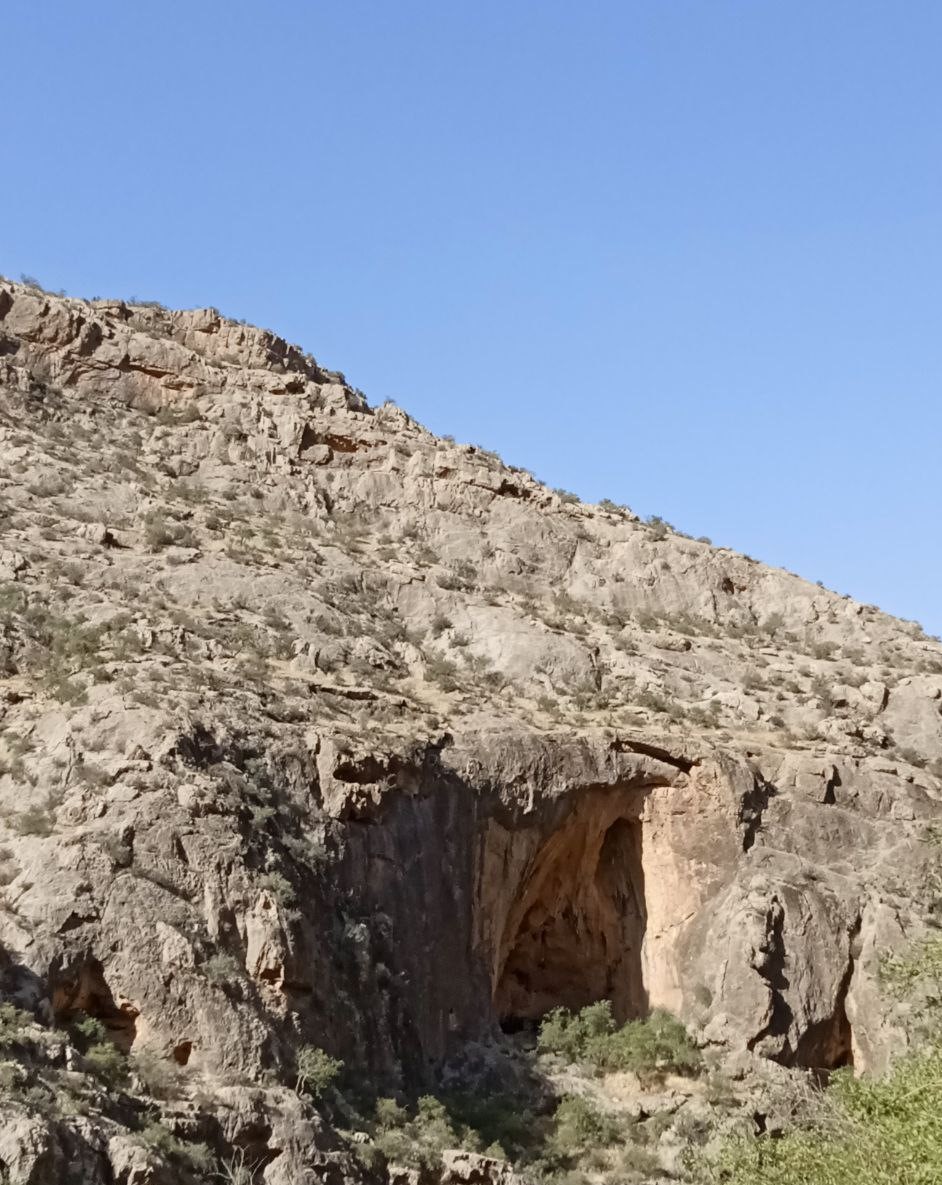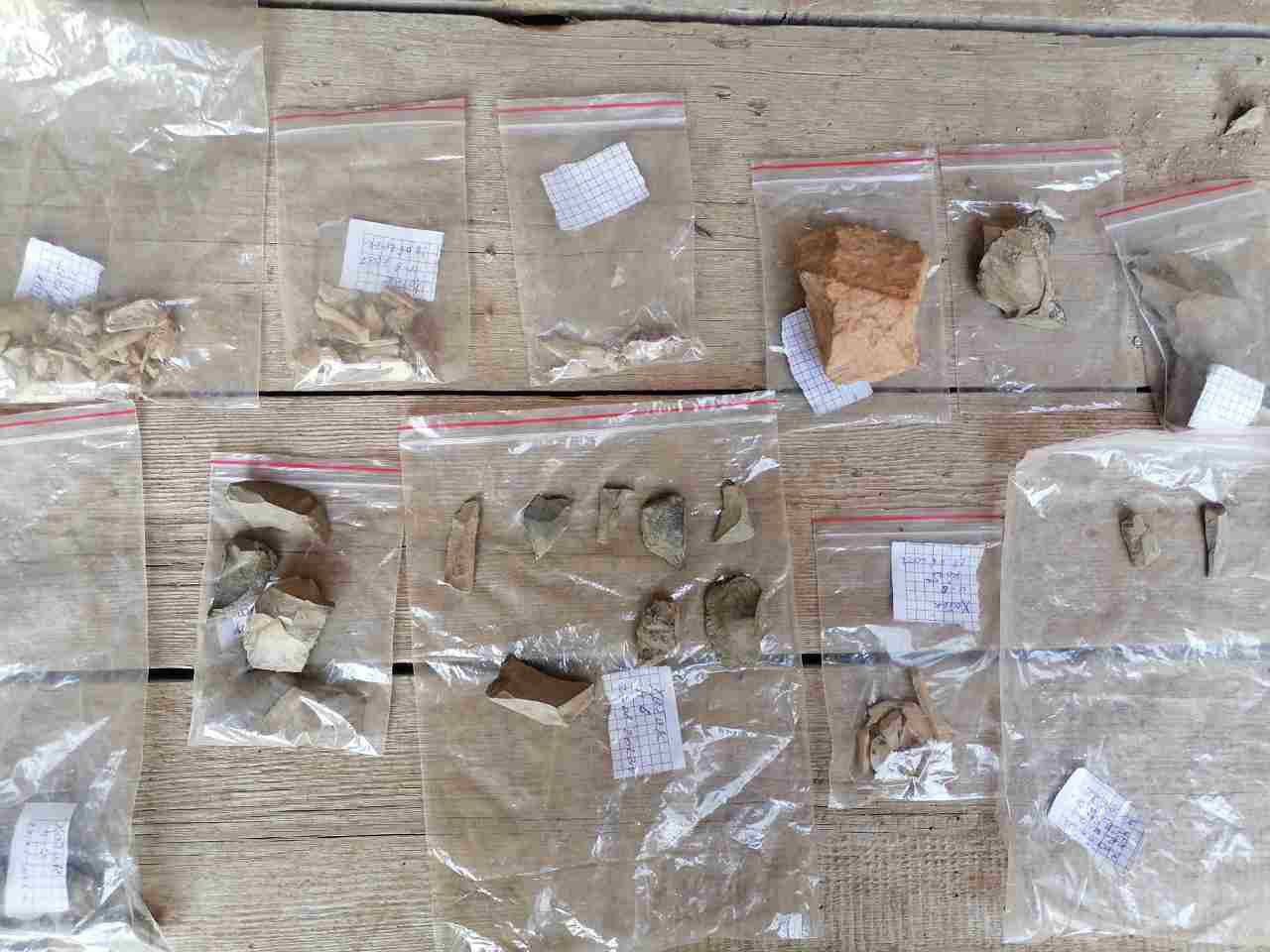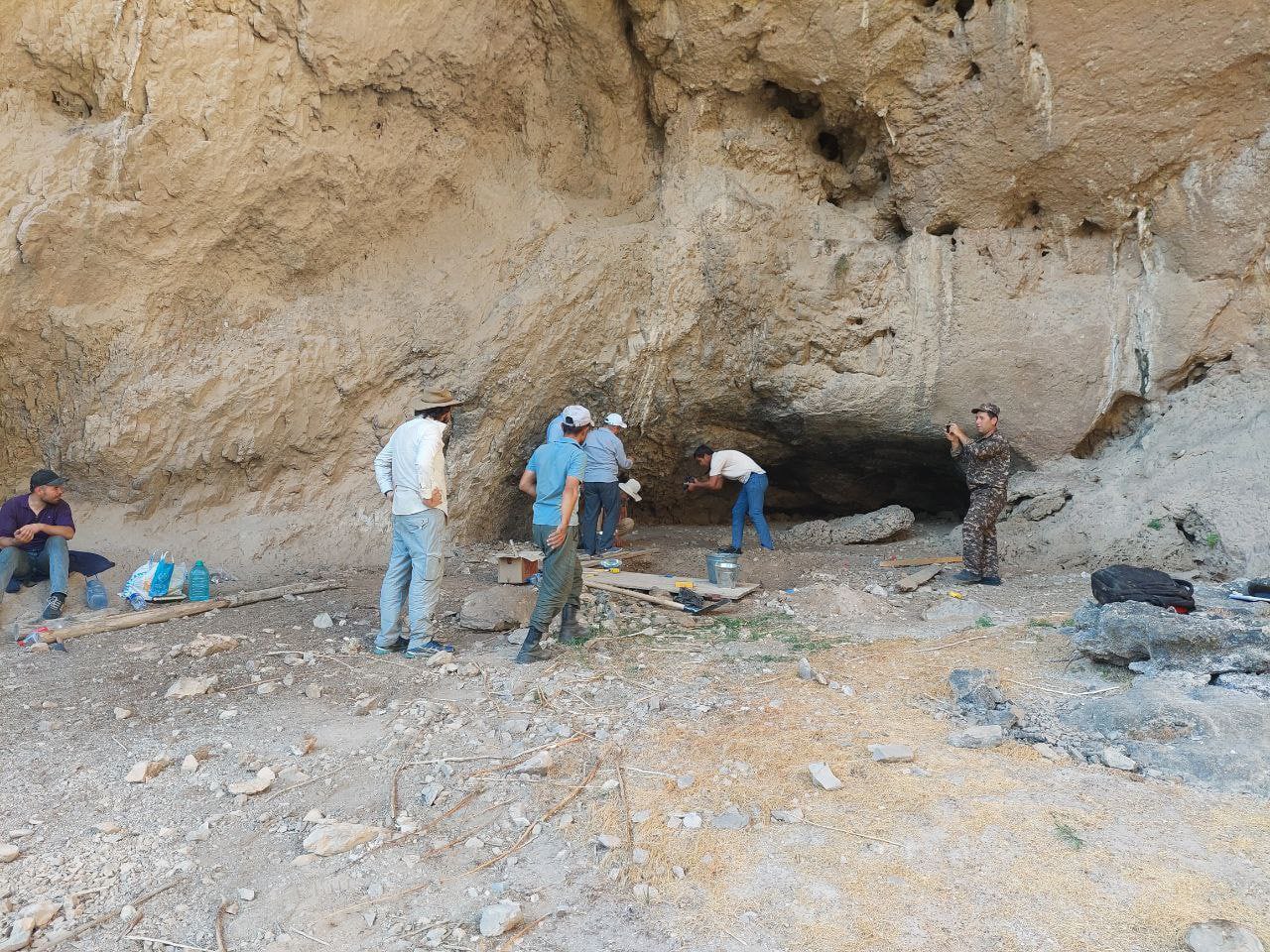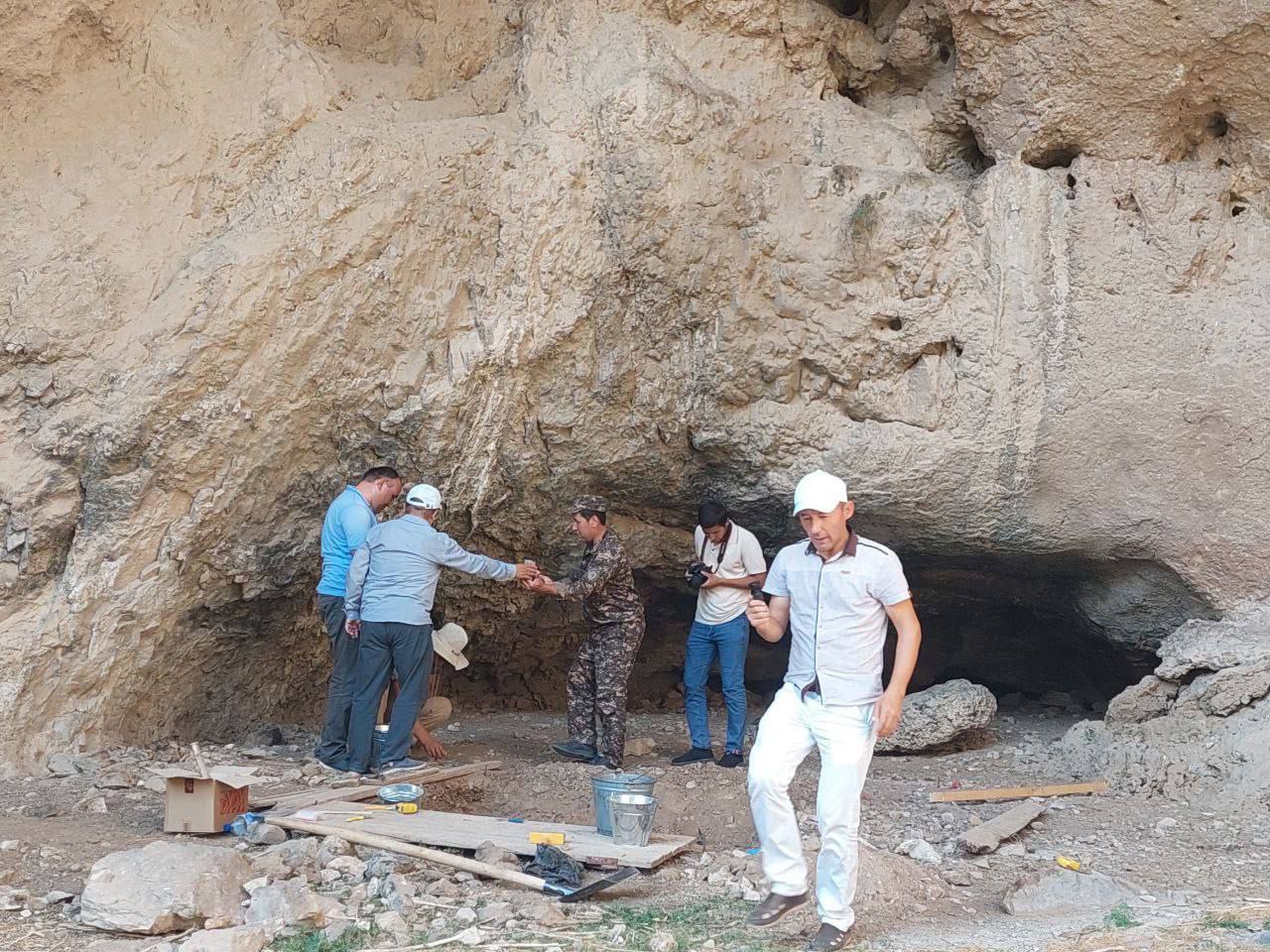Khatak cave is located on the right bank of the river of the same name near the settlement of Khatak in the Sherabad district, Surkhandarya region of Uzbekistan. It was discovered in 2021 by a doctoral student, Oinazarov Holiyor of the National Center of Archeology of the Academy of Sciences of Uzbekistan, while searching for petroglyphs. The cave was examined in the same year by the staff of the Department of Landscape Archaeology of the National Archaeological Center. The study of the cave and preliminary excavations were carried out in June 2022.

The cave is formed in the vertical rock surface of the right side of the Khatak River at an altitude of 15-20 m and is very difficult to access. This difficulty of access, particularly for humans and animals, ensured the unique preservation of traces of human activity in the Stone Age. This is very rare in archaeology. In fact, the cultural layer of the cave is only about 15 cm thick, in the form of a gray humusised dry powdery loam, and together with the archaeological artefacts found therein, represents a complete and undisturbed picture of the domestic life of a Neanderthal who lived here 100-60 thousand years ago. Over this time, the organic remains of the cultural layer (leather, wood, etc.) have decayed and turned into humus, such that only stone tools, crushed bones of wild animals and the remains of a round hearth with ashes and embers have been preserved.



With tectonic rise due to the active orogeny occurring in Central Asia during the Quaternary, the banks of the Khatak River rose sharply, and the river itself deepened its channel, which made the cave inaccessible to either animals or humans. The stone industry of Khatak cave is of the same type as in Teshik-Tash. But all the cultural layers of Teshik-Tash were destroyed during its excavation in 1939. Now, archaeological research can proceed in a systematic and scientific way that was not possible in 1939. The cultural layer itself can give us information about the environment and climate inhabited by Neanderthals in this region (palynology and paleogeography). In the cultural layers of one of the caves of Middle Paleolithic Europe, the remains of genomes of three different groups of Neanderthals were found. This raises the possibility that we will also be able to recover the genome of the Neanderthals who lived here in Khatak. It is necessary to preserve this unique monument of archeology for the future.
The Neanderthal family did not live here for long. The cultural layer known to us at the highest level does not exceed 10-15 cm thickness. Below it is degraded rock without traces of human presence. In the Teshik-Tash cave, the total thickness of the cultural layer reached 1.5 m and was divided into 5 separate layers.